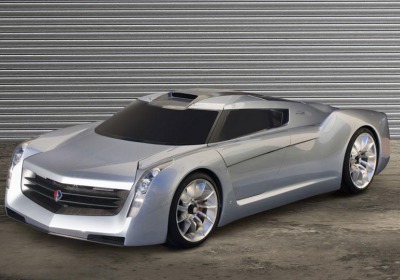GM looks to drop some weight with magnesium
Wed, 24 Oct 2012
Like many Americans, carmakers are on a continuing quest to lose weight. Less weight, which equals better fuel economy without a loss in performance, is a key selling point in dealerships.
Weight loss is a key factor for two upcoming launches from General Motors--the redesigned full-size pickups and SUVs, and the redesigned 2014 Chevrolet Corvette.
A dieter might shift from beer to light beer to water to shed pounds. Automakers are moving along a path of high-strength steels to aluminum and magnesium-usually a combination of those metals.
The challenges with aluminum and magnesium-aside from higher costs than steel-are finding ways to quickly and easily shape the metals and join them together.
With an eye toward the future, GM says it has developed a process to form sheets of magnesium using a stamping press. The process calls for heating the die and the metal blank to nearly 850 degrees Fahrenheit.
GM plans to use a trial run of trunk lid inner panels this fall. The trunk panel formed with magnesium weighs 2.2 pounds less than its aluminum counterpart.
In an era where engineers pull out all the stops to wring an ounce or two from every part, dropping pounds via a switch to magnesium would be a huge gain.
Today's vehicles typically use magnesium for the support bar inside the instrument panel, engine cradles or the core of the steering wheel. But those parts are die cast, not stamped from a sheet of metal.
Magnesium is harder to stamp than steel or aluminum. That's because its structure is brittle, more like ice, and the metal easily tears when pressed in a die, says Paul Krajewski, a GM body structure product development engineer.
The solution is to heat the metal blank to make it more flexible and heat the die, says Jon Carter, a GM metals researcher. It's a development of a process GM originally used for stamping aluminum panels.
"By heating it, we're treating the metal more like a plastic," Carter says.
Once the stamped magnesium part leaves the stamping press, it can be trimmed and processed with conventional assembly-plant tools, which helps keep manufacturing costs low.
The GM researchers also found that by changing the shape of the magnesium part's edge, they could use existing coatings to prohibit corrosion.
One big barrier to greater use of magnesium is cost. A metric ton of magnesium costs about three times as much as a ton of steel, and 50 percent more than a ton of aluminum.
But growing use of magnesium by laptop computer and mobile telephone makers is helping bring the cost down, Krajewski says. Also, magnesium makers are developing faster and cheaper methods to make large sheets of the metal--60 to 78 inches wide--at the 1.5-mm thickness that the auto industry needs.
By Dale Jewett

